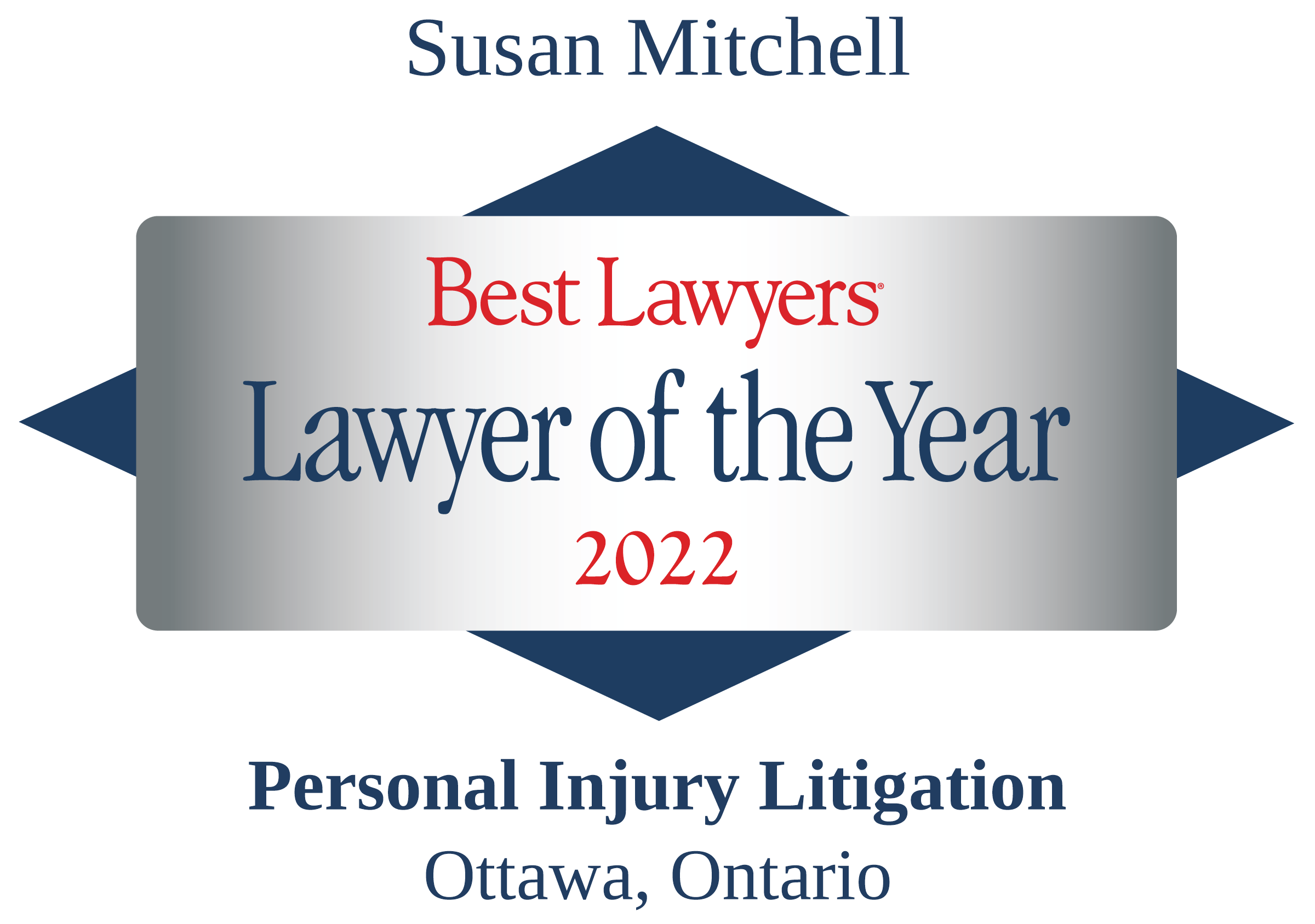With the weather warming up, many Ontarians are likely considering hopping back on their motorcycles or obtaining their motorcycle license to enjoy the open road. While motorcycle riding is an exciting pastime for many, motorcycle accidents happen in Ontario – and can result in serious injury or even death, given that motorcycles lack the basic protective features available in most cars. Riders need to understand the rules of the road and take steps to stay safe when motorcycling.
In this article, we will outline the rules of the road for motorcyclists and provide some helpful tips for staying safe and having fun while motorcycling.
Rules and Laws for Motorcycle Safety in Ontario
To avoid motorcycle accidents in Ontario, you need to understand the applicable rules and laws regarding the ownership and operation of a motorcycle. Below, we’ll walk through key considerations for motorcycle owners.
Who Can Operate a Motorcycle?
You’ll need to obtain an M Class licence to ride a motorcycle in Ontario. The type of motorcycle licence you obtain dictates the type of motorized vehicle you can operate, as follows:
- M licences: for full-speed motorcycles
- M with condition L licences: for mopeds and motorized scooters
- M with condition M licences: for three-wheeled motorcycles
To apply for a motorcycle licence, you must:
- Be at least 16 years old;
- Pass an eye test; and
- Pass a written test.
Once you’ve met these requirements, you will receive your M1 licence (your motorcycle learner’s permit). You’ll have restrictions on how you can use your motorcycle and be eligible to take a road test 60 days after obtaining your M1 licence.
If you successfully pass your road test, you’ll graduate with an M2 licence. While you will have more lenience in terms of how you can operate your motorcycle, you will still face restrictions until you are eligible for your second road test (typically after 22 months from the date you obtain your M2 licence) and, if successful, will obtain your “full” motorcycle licence.
For detailed information on the motorcycle licensing program in Ontario, visit the Ontario government’s page on graduated licensing.
Where Can I Drive a Motorcycle?
If you have your full M licence, you can operate a motorcycle on any highway in Ontario (much like a car). However, remember that M1 and M2 licences come with specific restrictions on where and how you can operate your motorcycle.
For example, with M1 licences, you are prohibited from operating your motorcycle on roads with speed limits over 80 km/hr (though some exceptions apply).
Do I Need Insurance to Operate a Motorcycle?
Insurance for motorcycles is mandatory – under the Compulsory Automobile Insurance Act, RSO 1990, c C. 25, anyone who operates a motor vehicle (including a motorcycle) must carry insurance. Failing to obtain insurance can result in fines, which start at $5,000, and may have their driver’s licence suspended.
Remember that you’ll need to obtain separate insurance for your motorcycle (insurance policies apply to a vehicle, not an individual).
While paying for more than one motor vehicle policy might seem excessive, remember that motorcycle insurance is more than a legal requirement. With insurance, you’ll be protected if you are involved in an at-fault accident and, if you’re injured, will be entitled to medical and income replacement benefits. There’s simply no excuse not to carry insurance.
Do I Need Safety Gear to Operate a Motorcycle?
Under the Highway Traffic Act, RSO 1990, c H.8, all motorcyclists (including passengers) are required to wear an approved helmet with the chin strap securely fastened under the chin.
While you are not required to wear protective clothing beyond a helmet while operating a motorcycle in Ontario, it’s prudent to obtain other protective gear, such as a full-length jacket and pants (or riding suit), motorcycle boots, gloves, and reflective gear.
Do Special Speed Limits Apply to Motorcycles?
Motorcycles are expected to follow many of the same rules of the road as motor vehicles, including speed limits. To that end, there are no special speed limits for motorcycles, and drivers must follow the maximum speed limit signs posted on the road.
Remember that speed limit signs are maximum, and it’s important to use your judgment, particularly when operating a motorcycle. Slowing down and giving yourself extra space is critical to safe motorcycle operation and will help avoid accidents.
How Are Motorcycle Accidents Handled in Ontario?
From a personal injury perspective, motorcycle accidents in Ontario are similar to other motor vehicle accident claims. Motorcyclists are required to carry motor vehicle insurance, meaning they will be entitled to accident benefits if a motorcycle accident occurs. This applies even if you are involved in a single-vehicle accident. And, if you are injured or suffer losses due to the actions of another party while riding your motorcycle, you can bring a personal injury claim against them.
Where motorcycle accidents can differ from other types in severity, motorcycle accident victims often incur much more serious injuries and may require extensive surgeries, extra care, and rehabilitation to recover.
Avoid Motorcycle Accidents in Ontario with our Safety Tips
The best way to avoid motorcycle accidents in Ontario is prevention. By following safety tips, you can minimize your risk and make the most of travelling by motorcycle. Below, we’ve outlined just a few things you’ll want to consider:
- Stay sober: like motor vehicles, it’s illegal to operate a motorcycle while under the influence of drugs and alcohol. Staying sober is critical to operating a motorcycle safely.
- Wear appropriate clothing: in addition to the helmet requirements outlined in the Highway Traffic Act, RSO 1990, c H.8, ensure you are wearing appropriate protective clothing to minimize your risk of injury while operating a motorcycle.
- Give yourself space: ensure you have adequate distance between yourself and other vehicles while operating a motorcycle to minimize the risk of an accident. Keep in mind that motorcycles can stop and accelerate faster than other types of motor vehicles – giving yourself extra space protects you and also protects vehicles around you that may not be able to stop as quickly.
- Avoid inclement conditions: driving in inclement weather, such as snow or rain, is especially risky on a motorcycle. Use your common sense in less-than-ideal conditions and, if possible, avoid operating your motorcycle.
- Brush up on motorcycle safety: whether you’re a new motorcycle operator or a seasoned pro, brushing up on your safety knowledge is always a good idea. Consult the Official Ministry of Transportation (MTO) Motorcycle Handbook regularly to ensure you are adhering to the rules of the road.
Skilled Personal Injury Lawyers Serving the Ottawa Region and North Bay
At Tierney Stauffer LLP, our skilled personal injury lawyers have the knowledge to handle a variety of personal injury claims, regardless of how the accident happened. Unfortunately, motorcycle injuries can often be more extreme than accidents involving other modes of transportation and require the attention of an experienced personal injury lawyer.
We have the skills and resources necessary to tackle these complicated issues so you can focus on your recovery. Call us at 1-888-799-8057 or contact us online to set up a free consultation with one of our experienced personal injury lawyers.


